#gallic goddesses
Explore tagged Tumblr posts
Text
The gods of Gaul: Cernunnos
Cernunnos is without a doubt one of the most famous gods of Ancient Gaul, and yet he is actually one of the most mysterious Gallic deities. Sure, he definitively marked the imagination of people - I mean he was literaly used as the basis for the Wiccan Horned God, and you will see lots of Cernunnos-copycats in fantasy RPGs and the like. But... we actually do not know the truth about this god, and despite everybody on the Internet trying to make it sound like we have an easy and simple summary of what he is, we only have strong theories and conflicting hypothesis.
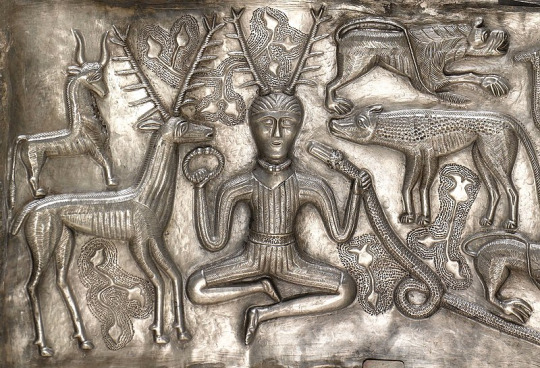
I/ What we actually have
As with a lot of Gallic gods, Cernunnos exists not in legends or myths, but through a name and a visual. The name Cernunnos is found three times all on its own in Gallic documents. One was a Greek inscription from Montagnac that only says "This is dedicated to Karnonos of Alisontia". The other two are identical inscriptions found in Luxemburg (near Steinsel), votive inscriptions of wish-offerings merely saying "Deo Ceruninco". There is actually a fourth inscripton of the name Cernunnos - and it is from this one that we get the spelling we use today - but it is a special one. Unlike the other three, this one has a picture alongside it identifying the god visually. It is the famous "pilier des Nautes" found under Notre-Dame-de-Paris, the "pillar of the Nautes", the "pillar of Boatmen", considered one of the most important Gallic monuments (because it depicts a set of divine portraits with their names explicitely spelled out).
It is only thanks to this pillar that we know today that the many depictions of a male horned god found across Gallic art are meant to be Cernunnos. There are too many visual depictions of him to be listed here (sixty or so were found by archeologists), but among the most famous is the one I put a picture of above: the Cernunnos of the Gundestrup cauldron found in Denmark.
Here is what Cernunnos looks like on the pilier des Nautes:
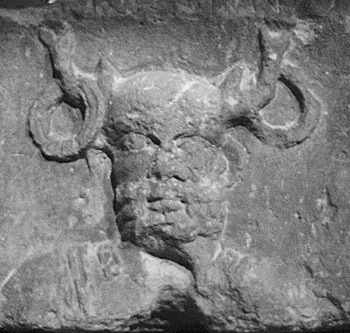
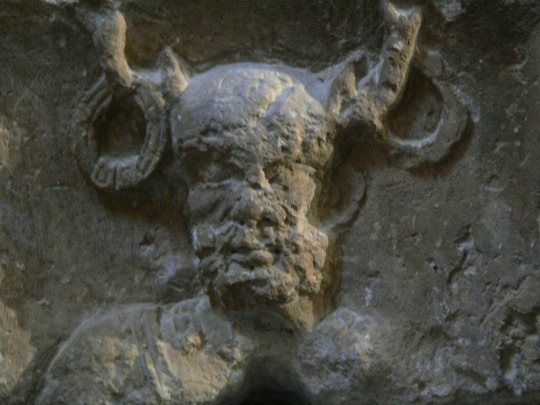

So, we have a name and a bunch of pictures. Let's try to break it all down.
When it comes to the name, Cernunnos/Karnonos, it is commonly agreed by etymologists and those that studied the Gallic language that it means "the horned god". "Carnon/Karnon/Karn" was known to mean "horn", both in the sense of animal's horn and a blowing instrument - it was tied to the Gallic tribes known as the Carni and Carnutes, and to the Celtic carnyx. The "kern" part is also considered to be equivalent to the Old Irish "cern", which was associated with horned beasts. Some have pointed out that if the "Cern" of "Cernunnos" means horn, the "unnos" could be a suffix meaning "beautifully" - so instead of Cernunnos being the "horned god" or the "horned one" it would mean "He who is beautifully horned" or "He with beautiful horns". But all in all, his name stays connected to horns.
[But is it truly his name? This is another debate typical with the gods of Gaul: we do not know the differences between the proper names, the titles and the nicknames. It could be (to take a Greek comparison) like Hestia's case, where he names literaly means "hearth" but is a proper name ; or it could be like the "Old Man of the Sea" which was a generic nickname for a whole group of sea deities.
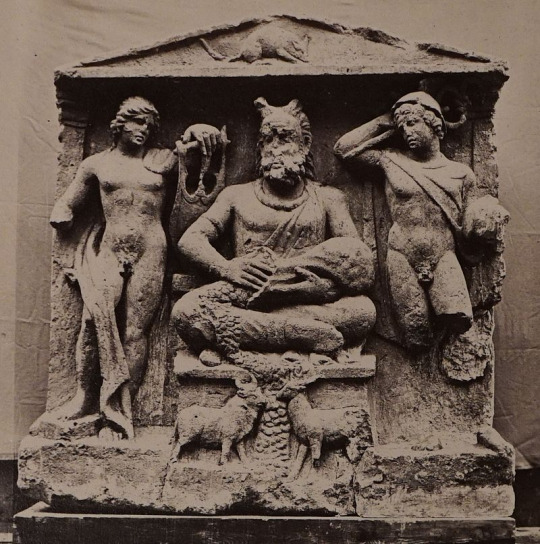
Now let's talk about the images of the god. Thanks to having so many depictions of him, we can identify recurring traits that define his visual.
Cernunnos always appears with his legs crossed, in a position (the "lotus" or "yoga positon" to take Asian terminology) that is considered, depending on the sources, either "very unusual for a god of Gaul", either "absolutely typical of Celtic representations of gods, warriors and heroes"... Well, he is almost always in the "lotus position" - in rare cases, he can be standing up. Cernunnos is also always wearing a torc, the traditional Gallic ornament, though he isn't always wearing it around his neck as one would expect: sometimes he holds it in his hands, other time it hangs from his antlers. Speaking of antlers: as we said, Cernunnos is a horned god, and he is usually depicted with antlers. But sometimes, more rarely, he rather sports goat horns - maybe it is a Romanization effect, as he got confused with Pan?
Cernunnos is always a male figure, though his actual age is unclear. Sometimes he is a mature and bearded man, but we also have "ephebe" depictions of him as a beardless youth - that some researchers even go as far as to describe as "child-like". Similarly, he keeps oscilatting between being a singular entity, and a triple-god with three heads or three faces. The disposition of the three faces can be really weird and freaky - for example, he can have a regular human head, and two small human faces growing from either side of his neck, or from the top of his head.
He usually always has a bag or basket with him, a bag that he eithers opens or that is simply sitting before him, spilling its content: sometimes the bag is filled with food, other times with coins, and other tims yet with grain. Cernunnos is usually sitting in the middle of a trio (as in two other humaoid or divine figures are by his side), or he is surrounded by various animals - which he can be seen holding with one hand, or petting near his lap. There are various animals he is associated with - we have seen him with stags, with bulls, with rats, with dogs, with lions, with goats... He is most notorious for being often depicted with the symbolic-mythical beast of Gaul known as the cryocephal snake: a ram-headed snake, whose exact meaning is still unclear to this day. However, Cernunnos seems to really like them: sometmes they just sit side by side, sometims he holds it by the throat, sometimes he feeds it, and other times two of them sit on his lap.
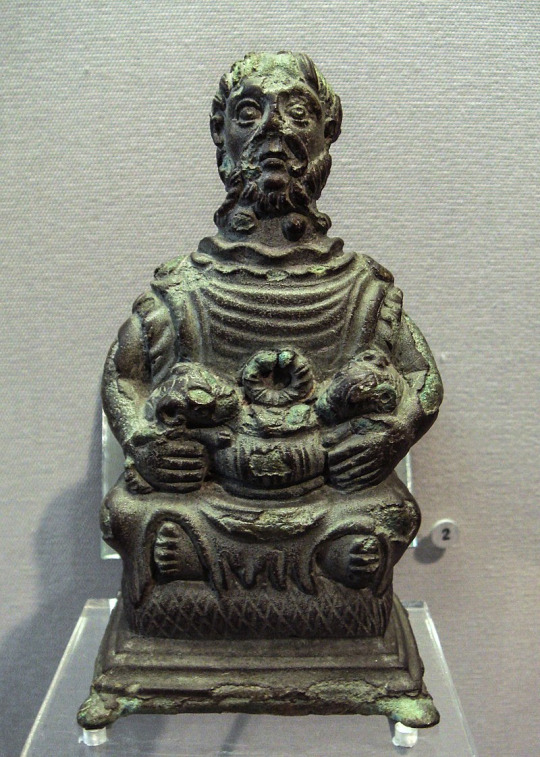
(This depiction above lacks any horns, but there are two holes at the top of the head implying that the horns were a different part of the statue added separately - which is very interesting in the theory of Cernunnos having antlers that "fall")
One of the problems with the Cernunnos visuals is that it is not clear where they stop, as we got a wide range of variations between the animal and the man. For example, there are strong theories according to which Cernunnos appears on the Strettweg chariot, as the tiny deer with oversized antlers that two men are holding (which would mean Cernunnos could be depicted as a full stag without human traits):
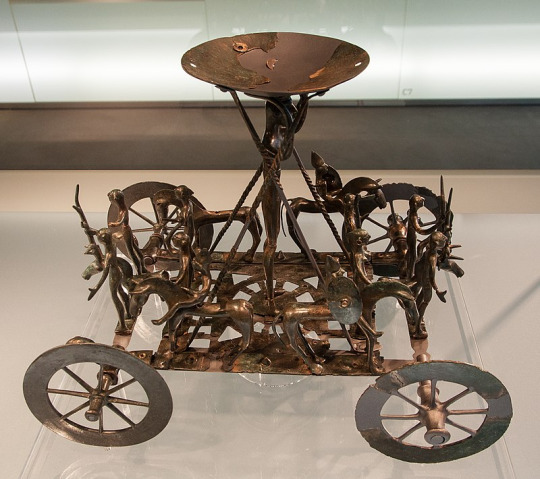
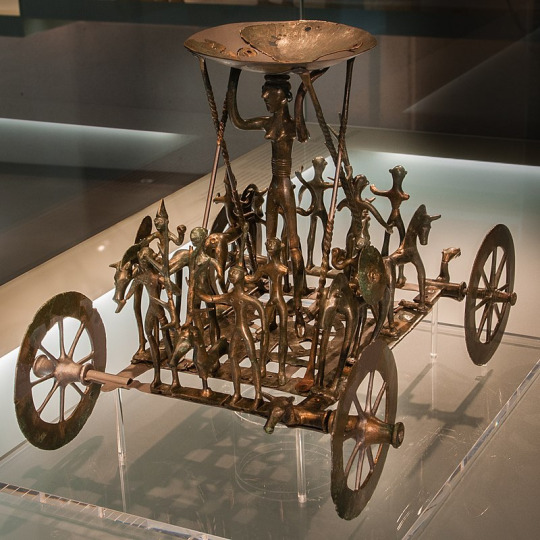
And on the opposite spectrum, a Gallo-Roman statue was found in Amiens of a fully human deity... except for one deer ear on the side of his face. One of the theories to explain this bizarre statue of the first century claims that it is an hyper-Romanized depiction of Cernunnos - though other theories do exist (for example, when the statue was discovered, it was originally believed to depict Midas, with a variation of the "donkey ear" punishment):
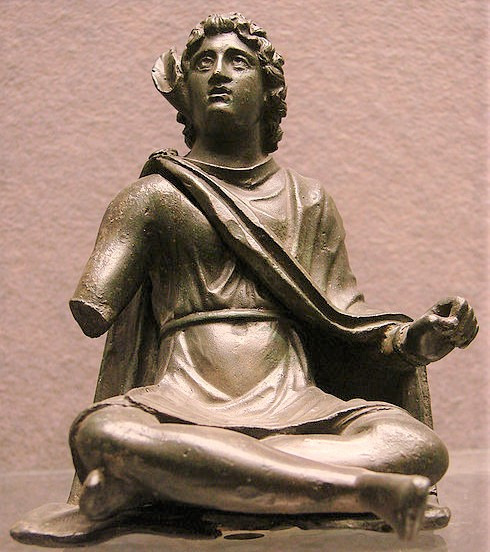
And you also have in Bouray a cross-legged god with deer legs rather than antlers or ears:
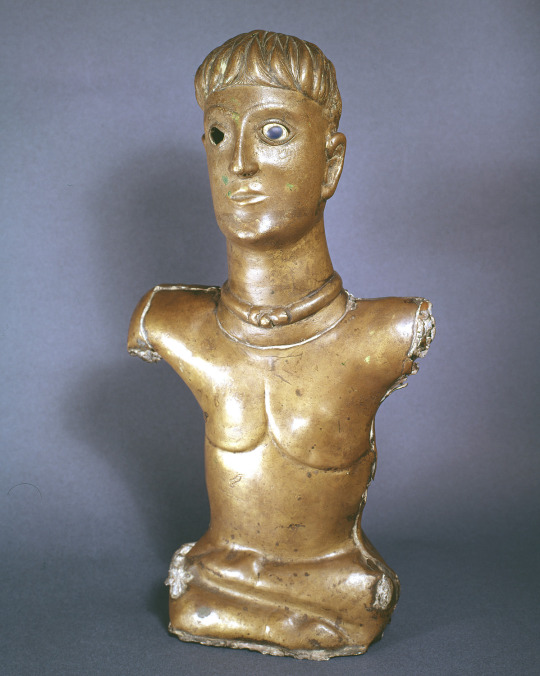
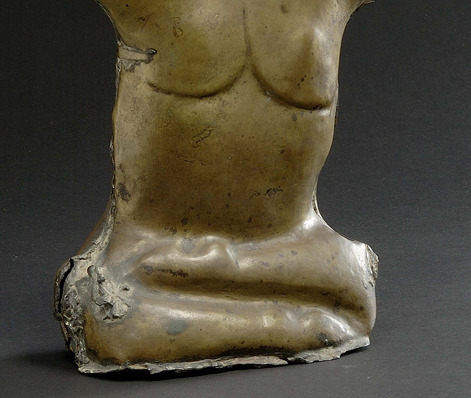
Given how "late" the visual depictions of the gods of Gaul was, and how the Romanization of Gaul strongly encouraged and favorized the depiction of deities as humanoids (to fit with the Greco-Roman deities), it is very likely that Cernunnos started as a divine stag, as fully animal, and then slowly, especially under the Roman influence, became more and more humanized... (There's also a fascinating case of antlered-goddesses at Clermont-Ferrand and Besançon, but that's for later).

II/ Some theories
Now that we have the name and the visuals done... What's Cernunnos deal? Again remember we can only make theories based on these fragments and their context - but we do not know for certain if it is the truth.
A: It is agreed that Cernunnos is a nature god, and a god of abundance. The fact he is half-stag, and usually depicted with animals, and even holding them in a gesture of domination or use, shows that he is a fauna god, which prompted some researchers to identify him as one of the avatars of the "Lord of Animals, Master of Wild Things" archetype of Indo-European myths. But more importantly we are certain that he dealt with abundance and prosperity - thanks to him always having a big bag of grain, food or money. He was very clearly a god of riches and wealth - be them natural (grain, food) or manufactured (coins). Some have highlighted the idea that this tied to the symbolism of "forests that have big strong stags in them are bound to be fertile places filled with resources". Cernunnos' ties to abundance cannot be denied because in some Classicized depictions of him (such as the silver goblet above), he is literaly seen holding a cornucopia, aka a horn of abundance.
Some people even want to push the domain further by thinking Cernunnos might have been a god of sexual and reproductive fertility - but this is not based on any visual or religious clue. Rather this theory ties on the European symbolism of the stag as a symbol of virility and reproductive prowess, so it is a purely contextual reading, to be handled carefully. We are only truly certain that Cernunnos offered lots of money, lots of grain, lots of food, and lots of animals (him being surrounded by animals might be an extension of the "I offer you this bag of grain" visual, since animals were hunted down for food, so he isn't just a god of good crops and economic riches, but also one that ensures a plentiful hunt).
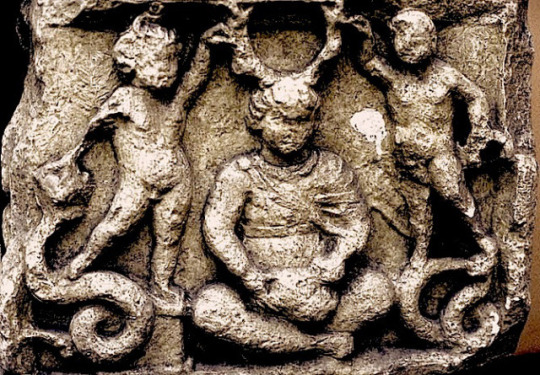
B: There is a strong theory going around that Cernunnos might be a seasonal god, or a deity of the seasonal cycle. This idea comes from various elements pieced together - and which added with the A theory above, would make this go a sort of "Father Nature" figure. It all starts wth the European symbolism of the antlers and the stag in general: given the antlers fall and grow with the turn of the seasons, the stag has been used heavily in Europe as a way to measure the year or symbolize seasons. Some researchers theorized, based on how the size of Cernunnos antlers changes through depictions, and on how he is sometimes a beardless youth sometimes a bearded mature man, that Cernunnos, like the stag, had a seasonal cycle. For some he just loses and grows back his antlers (there is a Cernunnos depiction at Meaux with what seems to be the stubs growing back after antlers fall, which would support this theory), but others push it further by claiming the god died and was reborn each year with winter/spring - an idea inspired by the Indo-European archetype of the dying/sacrifical vegetation god.
There is a specific depiction of Cernunnos that ties into this whole - and I will have to trust Yann Brekilen's word for this, as I couldn't find any picture of the engravings he described. According to him, on the Gallo-Roman Germanicus Arch/Arc, by Saintes, there is a dual depiction of Cernunnos. On one side of the Arch, he is part of a trio: he is sitting crossed-leg with antlers on his head, but naked (usually Cernunnos s clothed in some ways). By his side there is a man armed with a club/mace (which might be tied to the "god with the mace", we'll see that in later posts), and a woman holding a cornucopia. Now, that's on one side of the monument - but on the opposite side, the scene is reproduced... with both the armed man and the antlers of Cernunnos missing, only leaving a regular cross-legged naked man, and the cornucopia-woman. Speaking of this cornucopia-woman: there are repeated talks and interpretations of any female figure by Cernunnos' side to be a "Mother-Goddess" or Earth-Goddess supposed to be the wife/companion/lover of Cernunnos. This is all part of an effort to make Cernunnos a "father-god" (which makes sense in some ways), and it ties into the whole reading of his myth as being a seasonal cycle (the god dying and resurrecting after impregnating his female counterpart ; something the Wiccan mythology for example reused in their beliefs), but... If you ask me, I am not really convinced? A lot of people insist on there being a "Mother Goddess" clearly by Cernunnos' side, but sometimes you see these people reinterpret a lot of the visuals, and it is not obvious that the female figure is with him (Cernunnos is usually surrounded by male figures rather than female ones). Plus, we know the Mother Goddess of Gaul tended to come in three (the famous Matronae) so... I am a bit doubtful of that, but that's just me and because of a lack of convincing evidence.
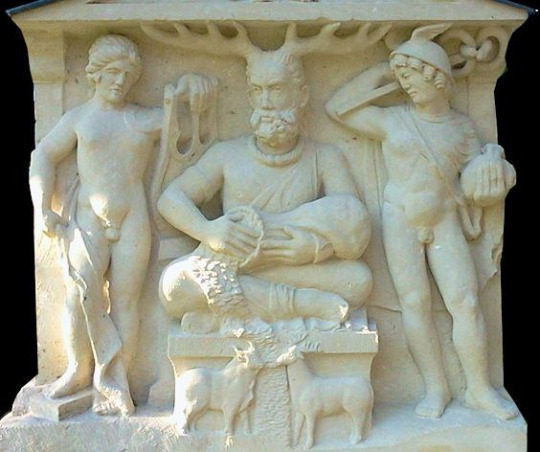
III/ Comparisons and equivalences
As I said in my introduction post, a lot of what we know about the Gallic gods comes from the syncretism the Romans operated with their own deities. And with Cernunnos it is... complicated. Because we do not know exactly who was the Roman equivalent of Cernunnos (since the Romans did not speak of him), and based on researches we have two likely candidates. It is very possible Cernunnos might have been split into those two Roman deities, or at least that his attributes led him to be interpreted as two deities mixed in one.
On one side, there is a very strong and popular theory that Cerunnos was the god Cesar, in his description of the religion of Gaul, called the "Dis Pater". "Dis Pater" was the Latin god that was equated and synthesized with the Greek Hades under the share nickname "Pluto", "the rich one". This was because Dis Pater was not originally a god of the dead in the old Italian religion - he was an underground god, indeed, but a chthonic god of riches and wealth, an earth-god of fertility (his very name meant "Rich Father"). This is what tied him to Hades, the richest of the Greek gods - and made him the new god of the underworld and the dead, Pluto. So, equating Dis Pater with Cernunnos makes sense as we do know that both deities were strongly associated with an earthly form of fertility: Cernunnos, just like Dis Pater, brought grain and earth-grown fruit, as well as precious metal (in the form of coins). Not only that, but Cernunnos was strongly associated with the ram-headed snake, and while we don't know much about this mythical being (typically a companion of male gods in Gallic art), it seems to have been a chthonian symbol, and perhaps even a form of guardian of the world of the dead (or a guardian of underground riches cousin of the dragons of legends). This is what led many to interpret Cernunnos as a chthonian deity, perhaps even an afterlife deity - a tradition that seems to have been in early Christian art, where Cernunnos was often associated with the "mouth of Hell" or the "entrance to Hades" (like the 9th century manuscript Stuttsgart Psalter, which illustrates Cernunnos in a depiction of the Christ descending into Limbo.
If Cernunnos is indeed Cesar's Dis Pater, then it would be extremely interesting, because Cesar wrote in his records that the peopleof Gaul believed Dis Pater to be their divine ancestor, and the "father of their race". Aka, the Gallic Dis Pater is meant to be an All-Father, the first ancestor of the Gallic tribes, and the origin of the human race (or at least of the people of Gaul). If Cernunnos is this Dis Pater, it would confirm his role as a "Father-God" and his links to a potential "Mother-Goddess". (It could also explain why he so persistantly wears a torc, as an emblem of the civilization and traditions of Gaul) If Cernunnos is also the Dis Pater, it would give him a role as a nocturnal god, since Cesar resumed in his texts (or rather "recaped" since he was doing a report based on Posidonius own records) that it was because the people of Gaul descended from Dis Pater that the druids measured the time not in "days" but in "nights"...
The other very likely candidate for the Romanized Cernunnos is the one we call the "Gallic Mercury". We know that Mercury was one of the most popular and widespread gods of Gallo-Roman gaul. Cesar did mention him as one of the most important gods venerated by the Gallic tribes before the omans arrive (though this would contadict the is Pater theory, since Cesar identifies Dis Pater and Mercury as two different deities in the Gallic beliefs). Still, Mercury was a god of commerce and riches before all - even more so than his Greek counterpart Hermes - so it makes sense that he would be present in the Gaul province of the Empire, which was big heart of commerce. And where Mercury has a pouch of coins, Cernunnos has a full bag of them... And in several Gallo-Romans depictions one of the two gods that surround Cernunnos is very obviously Mercury... [Several of the images in this post are of the altar of Reims, which depicts Cernunnos surrounded by Apollo on one side and Mercury on the other] And Cernunnos' presence on the Pillar of Boatmen implies he was tied to the fluvial sailors, and to the fluvial commerce and travels... And in Luxembourg we have Gallic depictions of stags vomitting coins, again insisting on how the stag was associated with riches... Even if you take Cernunnos as a chtonian god or death god, it ties to Mercury's role as a psychopomp inherited from Hermes ; and Mercury's presence by Cernunnos side on the altar of Reims for example makes sense if you consider one of the deities Cernunnos was conflated with was Pan (hence the goat horns) - aka, the son of Hermes... Everything is tied together into one big convoluted web of inter-mythologies.
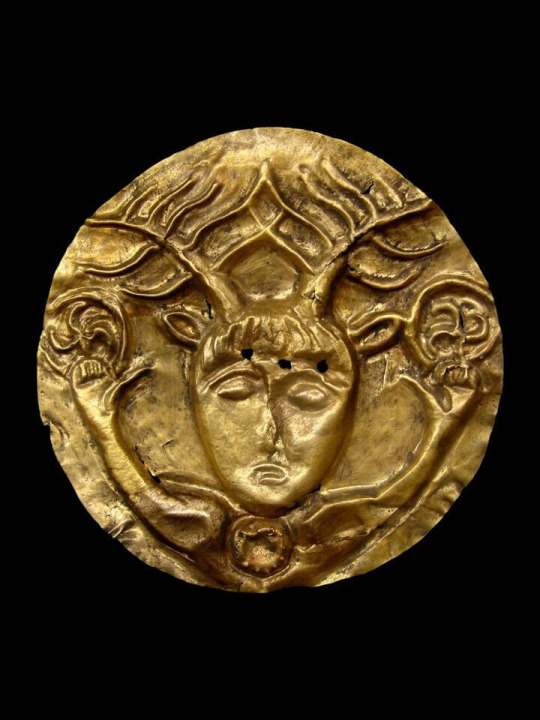
And when it comes to comparisons to other Celtic mythologies, things are a bit... In French we say "vaseux" - basically there were parallels drawn between Cernunnos and Celtic figures of the Isles, but they rely on very meager if not unstable links. For example some have tried to identify the Cernunnos of Gaul with the Irish figure of Nemed (interpreted as a "stag-god" leading "stag-people" or "deer-people"), and in return the battle between Nemed and Balor for the land of Ireland was projected onto the scene depicted on the Arch that I described prior - a battle between the horned god and the god with the mace for the "earth-mother", the cornucopia woman, the land-goddess. The acceptance of this scene between the horned god and the mace god as a battle for the mother-goddess (which, I insist, was not PROVEN in any way and is completely hypothetic and theorized with no definitive proof - maybe the mace god is here to sacrifice the horned god for the cornucopia-woman, or maybe he is just here to cut off his antlers, or maybe the cornucopia woma cheats on Cernunnos wit the mace god, we cannot know), also led to vague comparisons being drawn to the story of Pwyll and Arawn and how they exchange each other's identities, but we are really in a stretch here.
More interestingly there is a Welsh comparison that could indicate a leftover of a Christianized Cernunnos in an Arthurian setting: the Owein tale (Mabinogi): Kynon, a knight of King Arthur's court, describes how in his youth he had to encounter an ugly knight clad in a black armor who had the information he needed to find his enemy. The knight lived by a "fountain" (a water stream) surrounded by wild and ferocious animals - and to give Kynon the information he needed, the ugly black knight struck a stag nearby, and the animal lowers its head in the direction Kynon must follow. It is very plausible that this supernatural knight who hits an informative stag and who lives surrounded by wild animals is a form of Christian censorship or caricature of a Cernunnos figure, going from a wise and benevolent stag-god to an ugly evil knight who abuses animals, and who has his duality human/beast split between the knight and the stag.
There were also tenuous elements that made people consider the Irish Conall Cernach (known for being one of the sidekicks of Cuchulainn) as a diluted version of Cernunnos as a "Master of Beasts" - more precisely an episode in "The Cattle Raid on Fraech" where instead of killing a monstrous snake, Conall somehow tames it and wears it as a belt, has been compared to Cernunnos' handling of snakes and ram-headed snakes. And don't even get me started on the many, MANY saints of Catholicism that are supposed to be leftovers or reinventions of Cernunnos (saint Ciaran of Saighir, because he tamed wild beasts including a stag ; or the saints of Bretagne Edern and Théleau both supposed to ride a stag instead of a horse...).
The complicated thing (well ONE of the complicated things) with Cernunnos is that he is tied to the stag, and the stag was one of the most prominent smbols and images of the medieval and proto-medieval imagery in Western Europe. You had lot of old mythology stuff that survived in modern days, but you also had lots of medieval symbolism and images (like how the flying stag was one of the symbols of the king of France), and a HUGE re-use of the stag by Christianity in various forms (from the antlers falling being used as a symbol of the Resurrection, to the hunt for the white otherwordly stag of Celtic myths suddenly becoming a hunt for Christ incarnate when a glowing cross appears above the stag's head...). As such it is hard to pin-point what the Gauls truly believed the stag meant, versus the stag symbolism that arose in the Middle-Ages.
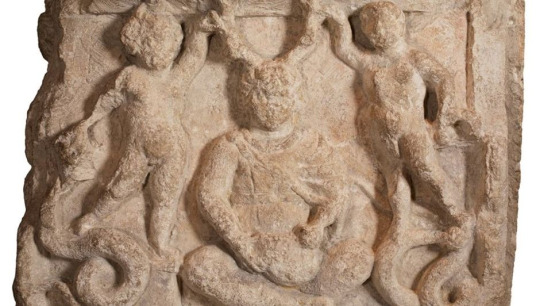
To conclude this post, while I said I had my doubts with systematic identifications of Cernunnos as a companion of a Mother-Goddess, I want to briefly return about a fascinating trivia of Gallic researches: the existence of a female version of Cernunnos, a "Cernunna" we could jokingly say.
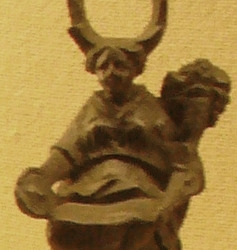
Little figurines and statues were found of a horned goddess - sometimes with antlers! - in both the area of Clermont-Ferrand (which was the domain of the Avernes folk) and around Besançon (the Séquane folk). Who were these goddesses? Local variations of Cernunnos? Sisters, daughters or wives of the god? Or completely unrelated deities? Were they one or several (some are more matronly, motherly figures such as the one with antlers above, others have Venus-like poses unveiling their breast and legs such as the bull-horned below)?
We will probably never know - but while they can be incarnations of this famed "Mother-Goddess" companion of Cernunnos everybody speaks about (and links to the importation of the cults of Demeter and Cybele in Gaul), it is VERY likely these statues date from the Gallo-Roman era and from a Romanized version of the Gallic religion. Indeed, they are all tied by their attributes - they hold a cornucopia, and a "patère" (sacred vase for religious libations). Attributes present in very Romanized Gallic goddesses (such as Rosmerta), but also in typical Roman deities (mainly the lares). Add to that how the adjunction of a male attribute (the stag antlers or bull horns) to a female figure is VERY unusual for Gallic depictions (where the genders are neatly split), while the divine androgyny was a feature of Greco-Roman mythology (the effeminate Apollo and Dionysos, the masculine goddesses Athena and Artemis, the mythical Hermaphrodite...), and it is very likely these statues of the "Cernunna" are the result of the Roman religion "breeding" with the Gallic beliefs...
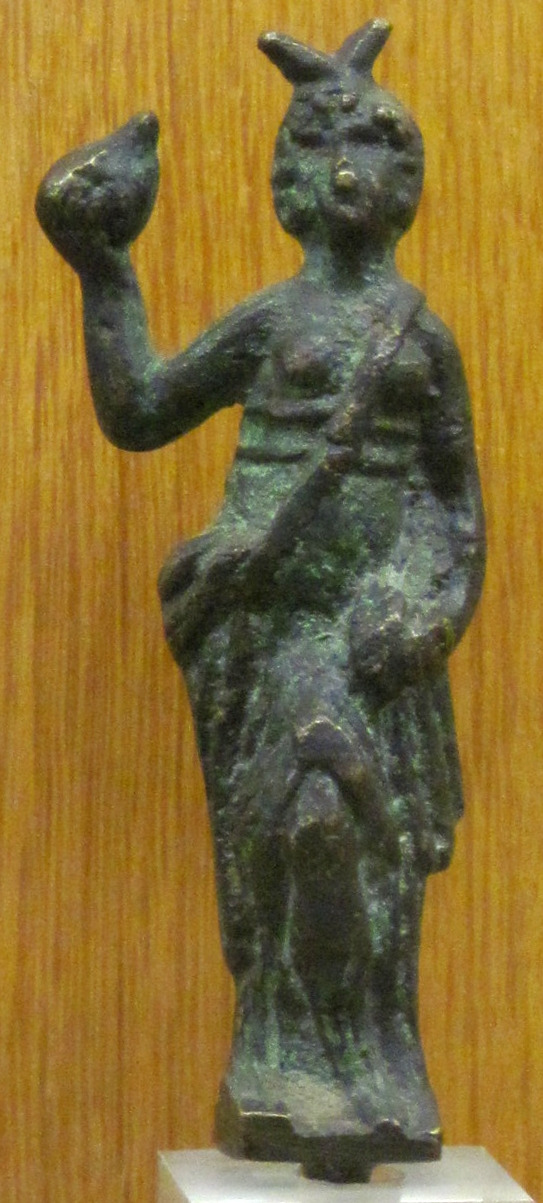
#gods of gaul#gallic mythology#cernunnos#ancient gaul#religion of gaul#gallic religion#gallic gods#gallic goddesses
287 notes
·
View notes
Text
Taking a moment to relax before finals week. I want to create another deity moodboard. I'm open to suggestions! Lmk who you want to see! Send some of their aspects as well!
#pagan#deities#polytheism#polytheist#deity#paganism#roman paganism#greek mythology#hellenic polythiest#hellenism#gaulish goddesses#gaulish gods#gaulish paganism#gaulish deities#gallic gods#gallo roman paganism#gallo roman#norse#norse pantheon#norse paganism#slavic pagan#slavic paganism#heathenry#religio romana#witchcraft#witchy#witch#witchblr#paganblr
20 notes
·
View notes
Text
Ending today with the Celts and the Kahina, so a brief look at some Celtic mythical archetypes first:
Ending today with a look at Celtic women in history and myth and then the Kahina, as a nod to tomorrow and the history of early Islam. First up is the Gallic Goddess Epona, who has a mirror in the British Rhiannon. Both Epona and Rhiannon were deities associated with horses, travel, and speed. Epona is also attested in plenty of Roman writings and has enough of her myth and her understanding to be fully discussed as a deity in more than a speculative sense.
In a good example of how different cultures can see an entity that might have had the same origin in different lines, Epona of the Gauls was a celibate deity, Rhiannon of the Britons was very much not.
#lightdancer comments on history#lightdancer comments on literature#women's history month#classical world and women's history#gallic mythology#epona#the goddess in theory and practice
2 notes
·
View notes
Text
If I had a penny for every time a Belmont got startled by a fox...




So, @aquilaofarkham pointed this out on BlueSky, and is totally right about it (they made the screenshots to, thanks for allowing me to use them!). Why I clocked this scene in Nocturne as well - I actually did not draw the comparison to the Trevor season 3 scene. But yes, that is indeed...
If I got a penny for every time a Belmont got startled by a fox, I would have two pennies, which is not a lot, but it is weird it happened twice.
And you know what that means, right?
THEORY TIME!!!
As some people might know: Since season 1 of Nocturne was out, I am very very certain of one thing. And that thing is, that the Belmont bloodline also goes back to a god.
In S1 of Nocturne when Annette talks about her own divine bloodline, she says a lot of people do have a divine ancestor, but the knowledge got lost. And to me this instantly read as: "Actually, by the way, the Belmonts totally have a divine ancestor as well!"
And I have been riddling since then, who it could be.
So, what if the fox is a representation of that ancestor?
Yes. This does mean I get to talk mythology again.
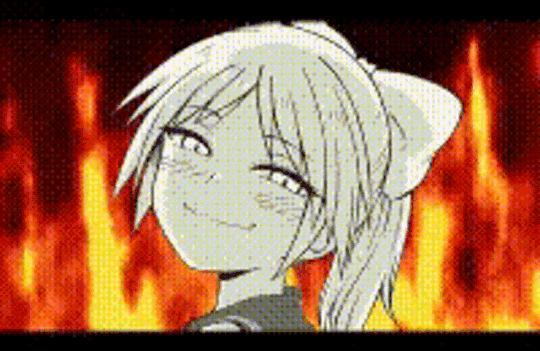
So, foxes. In early European folklore the fox is basically equivalent to coyote in North American folklore. Especially in Germany and France Reynard or Reinecken shows up a lot as a trickster spirit in the form of a fox. While there are some theories on Reynard somewhat going back to an actual deity, we kinda don't know about that for sure, because we have absolutely no textual evidence for it, and it mostly goes back to the fact that throughout the area in early medieval times the depiction of Reynard as a trickster is very very consistent - and also lines up with more eastern depictions of fox adjacant deities. Since we know that those are connected through Indo-European culture group it is not so weird to assume that there might have been a fox trickster deity, though if there was, we do not know their name.
But the good news is: The Belmonts are French in origin, and we do know from Trevor that they had contact to indigenous European people (aka the Celts). So, the highest likelihood for a divine ancestor is definitely a Celtic god or goddess.
Now, if we talk about Celtic deities we obviously run into the problem: Outside the Gaelic culture we know Jack Shit. Because fuck the fucking Romans and fuck the Christians even more, who very thoroughly erased most stuff about those religions. My anthropology heart does not spend three hours a day crying about this fact at all!!!!
Of course, we know the Celtic cultures were related, so there is a high likelihood that at least some of the deities from the Gaelic culture will also show up in the Gaulic culture, but we do not know for certain.
Which on the bright side also means, that my guess is about as good as whatever the writers might come up with. Hooray!
So, my first guess is Adsagsona. A goddess about whom we know exactly nothing. We know she was a goddess of magic, who was invoked in spells. And we have the suspicion she was maybe linked to foxes. Maybe. Because the thing is, we do have one written evidence of her being invoked, and some artifacts from the same area she was invoked in that might be related to her and the practice of magic. Which is not a lot. Cool bit about that, of course: It would totally give a writer freedom to make up whatever about this.
Next guess would be Arduinna. She was a forest goddess who got merged with Diana when the Romans colonized what is France today. She definitely got depicted a lot with forest animals, and definitely also was connected to the hunt (which works well with the Belmonts), though the preferred animal for her to be paired with was either the deer or the boar. Which, I would guess, makes sense, because people hunted those more for food than they would hunt foxes.
A bit more vague would be the god Cunomaglus. Because he is British, not Gallic, though definitely he is a hunting god, and while his main animal was the dog, he definitely got also depicted with foxes. No doubt about that bit. xD
Next up would be a probably related god to Cunomaglus: Nodens. Again, British. Again, hunting. Again, the main animal are gods. I would not know about him being depicted with foxes, but given he has a lot of overlap with Cunomaglus I would also not be surprised. Bonus points, because I know there is fandom-overlap between GDT's Hellboy movies and Castlevania: Nuada is based on the Irish equivalent to Nodens, and draws a lot of influence from the Brittanic god.
If we go a bit more wild, we could also make a guess for Ceres, though that one would be a bit weird. Ceres is of course a Roman Goddess, but Romans were also in France forever, so it is not impossible. Ceres is heavily associated with foxes, though mainly in the sense that foxes are sacrificed for her. But there is a fox association.
There is also with the Roman gods a very loose association with both Dionysus and Diana. But Diana usually gets depicted with dogs and stags, and for Dionysus there is exactly one myth linking him to foxes. So... Eh.
Lastly... I will just leave here that Diana's Slavic equivalent, Devana, actually gets depicted as a fox more than once. But Slavic culture is kinda on the other end of Europe. So it is possible, but also... Eh. It is a far bit away. But then again, the Belmonts lived in today's Romania for a long while, so it is not impossible, I guess.
And that's it. For today at least.
But I wanted to get this off my chest.
#castlevania#castlevania netflix#castlevania nocturne#castlevania meta#fan theory#speculation#celtic mythology#roman mythology#slavic mythology#european history#trevor belmont#juste belmont
101 notes
·
View notes
Text

Adieu to the divine Françoise Hardy (17 January 1944 – 11 June 2024). Her death aged 80 is deeply saddening but not unexpected (Hardy had been living with cancer for many years). Where to start with this Parisian pop goddess, French national treasure, inspired musician, impossibly chic style icon (dressed by Chanel, Yves Saint Laurent and Paco Rabanne and photographed by likes of Richard Avedon and David Bailey) and occasional model and actress? On a superficial level, with her moody, inscrutable penchant for glancing downwards through a sweep of long bangs and false eyelashes, Hardy was a French kissin’ cousin to contemporaries like Marianne Faithfull and Chelsea Girls-period Nico. Most importantly, her music is timelessly devastating. Think of the swirling, lush drama and crescendos of 1960s Dusty Springfield or Phil Spector productions, but with a Gallic twist and with Hardy’s beguiling, coolly poised but sensual and emotive murmurs, sighs and whispers at the eye of the storm. And from her 1962 debut onward, she wrote her own songs when it was far from the norm for pop singers, let alone female ones. No wonder Gen X-ers embraced her as an adored cult figure during the 1990s “loungecore” era. My favourite songs by Hardy (and her quality control was exceptional) would have to include “Je n’attends plus personne” (with its unexpectedly angry snarling fuzzed-out guitar), “Et Même” (with its “handclaps-of-doom” intro before the piano kicks in – trust me, that description makes sense when you listen to it!), “C’est le passe”, “Tu peux bien”, “Je t’aime”, “Voilà” and her collaborations with Serge Gainsbourg (“Comment te Dire Adieu” and “L’Anamour”). What an artist, what a woman.
#francoise hardy#ye ye music#french pop#lobotomy room#chanteuse#french music#1960s music#singer songwriter#enigmatic#inscrutable#chic#loungecore#lounge music#serge gainsbourg#black liquid eyeliner
72 notes
·
View notes
Text

The goddess Juno 🪿💘🦚🐐
Happy September everyone! Did you know that on the kalends (1st) of September, the Romans held ceremonies for Juno on the Aventine? More specifically, they worshiped her form of 'Juno Regina', or Queen Juno.
When illustrating her, I wanted to emphasise the Roman aspects of Juno, rather than her syncretism with Hera, so I only included the peacock as a feather detail in her diadem. The goatskin is attributed to Juno's role as a protector of Rome, and has similarities with Minerva's Aegis. Her temple on the capitoline was also guarded by geese, which famously alerted the Romans when Gallic forces tried sneaking into the city at night.
I'm really pleased with how this turned out, especially since the white goose mirrors really well with Venus' white dove!
386 notes
·
View notes
Text
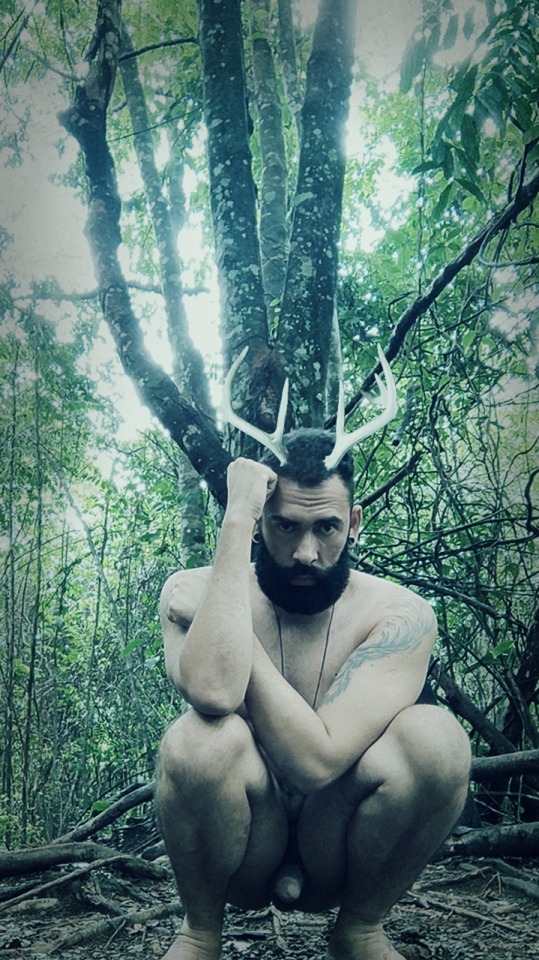
Cernnunos é um antigo Deus da cultura celta e gaulesa. Relacionado ao sexo, fertilidade, e prosperidade e é representado como um homem selvagem e com chifres de cervos que representam sua ligação com a Natureza, a Deusa Mãe. Cernnunos ainda é muito cultuado por bruxas e bruxos em todo o mundo, sendo o principal arquétipo do Deus, o sagrado masculino, a força solar, do fazer, fazer nascer o que antes foi gerado, por em prática o que foi projetado, trazer para fora. Sempre em consonância com o feminino, Cernnunos é a força do homem ideal, Instintivo, forte e viril, porém sensível, sábio, compreensível e companheiro. Dia: domingo; Cores: Amarelo, verde e marrom e dourado. Foto: Diego Bruxesco. @bruxesco _. Cernnunos is an ancient God of Celtic and Gallic culture. Related to sex, fertility, and prosperity and is represented as a wild man with deer antlers that represent his connection with Nature, the Mother Goddess. Cernnunos is still widely worshiped by witches and wizards around the world, being the main archetype of God, the sacred masculine, the solar force, of doing, giving birth to what was previously generated, putting into practice what was designed, bringing it out. Always in line with the feminine, Cernnunos is the strength of the ideal man, instinctive, strong and virile, yet sensitive, wise, understandable and companionable. Day: Sunday; Colors: Yellow, green and brown and gold. Photo: Diego Bruxesco @bruxesco
#wicca#witchcraft#witch#bruxaria#men#nudephotography#sagradomasculino#wiccalife#cernunnos#horned god
90 notes
·
View notes
Text
4.6 boss domain entrance translation.
*INCOHERENT SHOUTING*

Crucabena is a possible Gallic form of Ceridwen, a Welsh goddess of rebirth and poetic inspiration. Her original story is probably less important here than Robert Graves' interpretation of her as the destructive side of the Threefold Goddess.
Who, you know represents the phases of the moon.
Also anything Celtic in Genshin is extremely sus because it's almost nonexistent. So far we have the triquetra symbol, seelies and potentially Skirk. And some Melusine names.
This means she's old. Really old.
#genshin leaks#genshin impact leaks#arlecchino#genshin lore tumour#the moon sisters#what the hell what the hell what the hell
55 notes
·
View notes
Text
The marvelous story of Rouillac

The area surrounding French village Rouillac (dep. Charente, Ar. Cognac) is an Early Medieval unicum.
Of Gallic origin, Rouillac as a village came to prominence due to Roman occupation. Rouillac is likely derived from Rulliacum (domain of Rullius). The area bloomed because of its close proximity to the Via Agrippa. This is visible in the presence of a Roman theatre, bath houses and a Gallo-Roman burial site/sanctuary (located in Bouchauds). Unique finds include a statuette of Epona, a Gallic goddess.
Like most great Roman settlements, the area continued to be inhabited by people after the fall of the (Western-) Roman Empire. The site was inhabited both by Merovingians and Visigoths.
The area continued to be a rich society, shown in the Germanic burial site at Herpes. The site also shows how the Goths and Franks lived in good coexistence with each other.
Rouillac is because of this coexistence the southernmost and westernmost Merovingian village and the northernmost Visigothic village.
The parure above is Merovingian, but shows clear gothic influences (predominantly in the radiate-headed brooches).
The British Museum, London - United Kingdom
Museum nrs. 1905,0520.994
Found in Herpes, Charente - France
#frankish#merovingian#viking archaeology#archaeology#carolingian#charlemagne#field archaeology#viking mythology#merovingian archaeology#germanic mythology#norse mythology#anglo saxon#viking#field archaeologist#frisian#odin#vikings#germanic#germanic folklore#germanic archaeology#wodan#anglo saxon archaeology#history#jewelry#norse
21 notes
·
View notes
Text
I saw @dapperpea ask for another one of my ramblings about names and etymology but with Gaius this time.
So let's talk Gaius Baelsar.
As mentioned in my previous post, Gaius was most likely primarily named after Gaius Julius Caesar, roman dictator and key figure in the rise of the Roman Empire from the Roman Republic. To cement this connection to the Emperor Gaius Julius Caesar further as Gaius' namesake I will have to refer briefly to another character; Livia sas Junius.
While we don't know the exact relationship between these two (and I won't go into speculations about the in-game relationship, this is about names) there is reason to suggest that Livia and Nero were named partially to help establish Gaius as a parallel to Julius Caesar. Nero being named after one of his most famous Centurion and Livia being named after the wife of Emperor Gaius Augustus, Livia Drusilla, adopted daughter of Julius Caesar.
Both of them were also very brilliant and talented tacticians commanding their forces on the field and showing remarkable military victories. An example being the victories Caesar managed to pull of in the Gallic War through various means culminating in him conquering Gaul for Rome, not unlike the preset in ARR with Gaius and the XIVth Legion being set up in a similar way trying to conquer Eorzea for the Garlean Empire.
As a funny addendum; Julius Caesar believed himself to be a direct descendant from Aeneas, a minor figure in the Trojan war who later became relevant in the Aeneas Myth as the Ancestor of Romulus and Remus and by extension Rome. That is funny because Aeneas mother is Aphrodite, Goddess of Love. (I could go into another side tangent about why Caesar claimed that and why Aphrodite, or Venus rather, was a clever connection to establish and worship in ancient Rome as a politician and her origins as a War Goddess, but this is about FFXIV and I am not OSP)
Further connections to Caesar can be made in their downfall; betrayed by allies, Caesar was famously assassinated by senators and stabbed to death while Gaius arguably got betrayed in the Praetorium by Lahabrea using the Heart of Sabik to cast Ultima and then left after his defeat at the hands of the Warrior of Light, both falling to their demise at the age of 56. Though there is another General that could also have been inspiration for Gaius, something I will cover a bit further down. For now, let's focus on the name and it's etymology itself.
Gaius was not an uncommon name in Rome, one of Julius Caesars assassins was named Gaius Longinus, and the list of emperors and famous people with Gaius somewhere in their name is longer than I want to recall, including Caligula's real name, who was named Gaius Julius Caesar in honor of the emperor we discussed so far.
It was one of the most common personal names, or Praenomen, in ancient Rome, and one of the oldest in use, also spelled as Caius. Interesting side-tangent; the feminine form of Gaius is Gaia and the only Praenomen more frequent than Gaius was Lucius if i recall correctly.
Due to this Gaius as a name developed a special denotation as a referral to any man, kind of like John Doe, and Gaia followed suit. Your wedding vows in ancient Rome quiet literally had you say "As you are Gaius, I am Gaia", that is how much of a common name Gaius was.
Gaius most likely is derived from the same root the word gaudere originated from, meaning "to rejoice" or "to take pleasure [in something]". Funfact, the Italian godere evolved from this Proto-Italian word gaudere and can be slang for "Cumming" alongside its other connotations of taking pleasure or enjoying something.
Now, where it gets interesting once more is Baelsar. You see, Baelsar as a last name does not exist, not really. There are similar sounding last names to Baelsar, like Belzer which is a Middle High German last name roughly meaning fur and denoting a furrier, but nothing if you look for Baelsar specifically.
Bael itself was, before being demonized, a Canaanite weather and fertility God.
If we took the name apart we could get Bael and Sar.
Bael being the name of a demon in the Lesser Key of Solomon with command over either six, sixty-six or 250 legions, warden of the east and power to turn man invisible, love and science.
We could also look to the Bael tree, a fruit tree from India who is sacred to Hindus and in early hymns declared place of residence of the Goddess Lakshmi (Goddess of Luck, Love, Fertility, Prosperity, Beauty and Health) as well as an incarnations of the goddess Sati (Goddess of Power, Marital Felicity and Longevity) and favored by Shiva (God of Destruction).
Both of these avenues derive from vastly different sources, one from a God turned Demon, and the other from Hinduism.
Another look we could take is into the pronunciation of Gaius' last name; we hear it most commonly spoken as Belsar, where we swallow the a, just like with Ætheris. If we now turn our Bael into Bæl we have a word that actually exists with Proto-Indo-European roots, a word we can find in Old English, meaning "Funeral Pyre".
Sar also being found in many languages, but in Old English specifically meaning painful or sore, as well as other variations of these words alluding to wounds or pain.
If we put all that aside and only look at the pronunciation of his last name we will get a more probable and logical origin of it. Belsar comes from the Late Latin word Belisari. Belisari itself is the genitive of Belisarius, meaning roughly "Axe" and "Warrior", and also being the name of a famous general in the byzantine Empire who had a fascinating military career, similar to Gaius in game, showing off success after success for his emperor in battle before being tried and branded a traitor and conspirator.
It was quite fun diving into the possible connections and inspirations Gaius name has and discovering both parallels to famous roman generals and political figures like Julius Caesar and Belisarius as well as the, quite surprising, connections to religion we could get from his last name if we butchered it a bit. Most of these finds, especially everything regarding his last name, are definitely a stretch on my part and most likely not the real intentions.
Following those thoughts thou, some head canons that arose from my research on this:
The Baelsar family itself was never of that much importance in the Empire and only became known after Gaius rose through the military ranks
His first command of a troupe was given to him relatively early, somewhere in his late 20's to early 30's
There is definitely a not insignificant number of people in the Empire in their probably mid to late teens called Gaius or Caius specifically because of him and his renown
He definitely knows how to skin and tan fur
This man fucks. A lot.
Edit: Spelling, restructured for easier reading
22 notes
·
View notes
Text
The gods of Gaul: Rosmerta
After a god of abundance, a goddess of abundance !
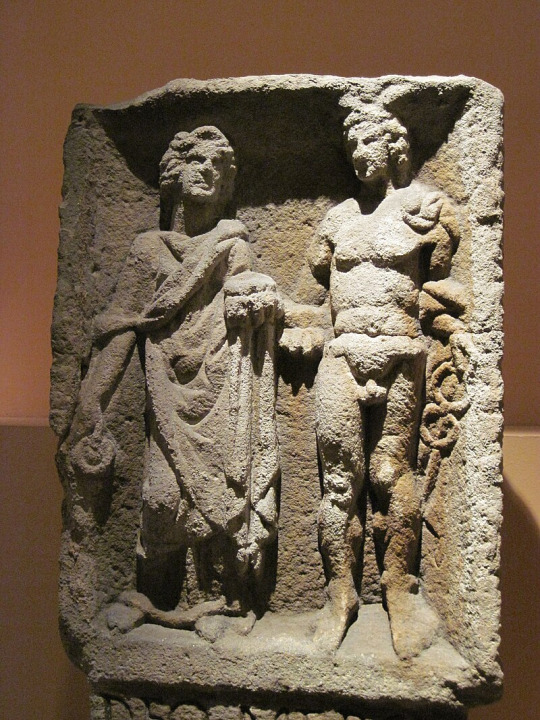
Rosmerta is a purely Gallo-Roman goddess. Not that she did not start as a Gallic goddess, mind you! For sure she was originally a goddess of Gaul – her very name is Gallic in origin. But the fact is that all we know about her, be it her role, her functions, her attributes, come from her incarnation as a Gallo-Roman goddess, part of the syncretized pantheon of Roman and Gallic gods. As such, we can only conjecture and guess who she was before the Romans arrived, based on the way the Romans handled and incorporated her.
One thing that is certain of is that Rosmerta always was a goddess of abundance. As I said, her name is Gallic, and commonly identified as being formed of three parts, “Ro”, “Smert” and “A”. The -a suffix merely denotes a female name. The prefix “Ro-“ is for amplification (like “very” ; a “robili” is someone who is very kind ; a “rocabalus” is a great horse). As for “smert”, it is found in many Gallic names and means either “who takes care of” or “who offers”. As such, Rosmerta could be translated as “The Great Giver”, “The Very Generous”, “She who takes care of very well”, “The Great Gifter”… In Gallo-Roman iconography, Rosmerta is often depicted holding a cornucopia, highlighting her role as a goddess of abundance and maybe fecundity (sometimes it is even stressed further by her holding the cornucopia in one hand, a basket of fruits on the other).

In the Gallo-Roman religion, Rosmerta is the eternal companion, the paredra, the female equivalent of the god Mercury. On all the visual depictions we have of Rosmerta, very few depict her alone – she is usually always with Mercury by her side. This makes sense when you recall who Mercury was in Roman religion. Too many people consider that the Roman gods are just the Greek ones with a new name printed on them. Mercury might have been the equivalent of the Greek Hermes, but in terms of functions and symbolism he differed from him in many ways. Most notably, while the Greek Hermes was mainly a god of talent, cunning, cleverness and intelligence (which manifested in his various attributes as god of messengers and eloquence, science and athletics, merchants and thieves), the Romans focused much more on the idea of a god of travel and commerce: as such, Mercury is the god of merchants, markets, business travels and lucrative journeys first and foremost. He was an economic god, a money-deity, who embodied prosperity and riches in a material and financial form. As such, it makes sense for him, in the Gallo-Roman syncretism, to be paired with a goddess who herself seems to have embodied abundance and fertility.
Interestingly, we can see how Rosmerta got more and more “fused” with Mercury over time. For example, in many depictions of the duo, Rosmerta is not holding her usual cornucopia, but a pouch full of coins or a bag of money – which was THE defining attribute of Mercury. The “Mercurification” of Rosmerta reached its paroxysm in a bronze depiction from Annecy, where the goddess appears alone… But with Mercury’s wings on both sides of her head, while holding a purse of coins. The transformation is complete: Rosmerta became simply the female version of Mercury, and lost her own identity. We have a lot of votive offerings and various prayer-inscriptions for Rosmerta, but they do not give us much information about her, and always made her one half of a duo with Mercury.

There is also this four-sided pillar which depicts Rosmerta holding Mercury's caduceus. You will notice with these pictures the very Roman aspect Rosmerta sports - with the Roman dress and veil and diadem.
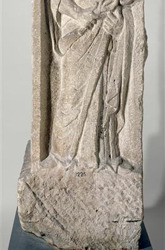
If you are curious, the other sides of this pillar found behind Paris' Sainte-Chapelle in 1748, depict Mercury, Apollo and a "winged Genie".


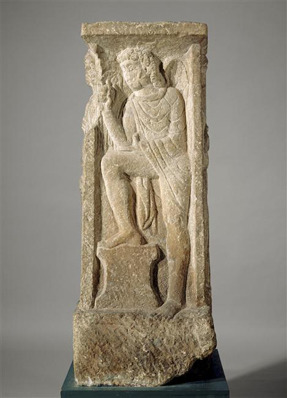
Interestingly, the lack of romantic or sensual scenes between Mercury and Rosmerta have led many to theorize their couple was not a romantic or marital one. Many believe that Rosmerta was probably identified with Mercury's mother, Maia, who had her own cult by Roman times. For example, there is the fact we have votive inscriptions acting in parallels - some invoking "Mercury and Maia" together, others invoking "Mercury and Rosmerta", but the two goddesses never appearing side by side in the same inscription. Their cult-areas do not overlap geographically speaking (here is a map below from the Belgian website deomercurio) - and when you consider that Maia was a goddess of the season of spring associated with the rebirth/birth of nature ; that she was often seen holding a caduceus ; and that she had been before associated with various mother-goddesses of fertility (Ops, Fauna, Bona Dea)... Well it all points to a very possible connection. In fact, the Mercurified statue of Rosmerta with wings on her head has been debated: because while many consider it is a Rosmerta statue, some rather see it as a Maia statue... The confusion is clear.

Some theorized Rosmerta might have been a goddess of the fertile earth and the natural abundance (hence the cornucopia, the basket of fruits), which would have made the “natural” reflection of Mercury’s man-made, artificial riches (coins, commerce, merchants and markets) – after all, Gaul was one of the food-providers of the Roman Empire, the place where the Romans got a lot of their cereals and grapes. To have a goddess of fruits coupled with a god of commerce would have been the perfect representation of the Roman conquest of Gaul… Some even push the idea further by saying maybe Rosmerta was an equivalent of Proserpina, or a female Pluto, as a goddess of the riches of underworld – but I found no conclusive evidence or solid theory for this, so I’ll mention it, but I give this no credit. Let us stick simply to how she is an abundance and fertility goddess, more likely a Maia equivalent.
There are other theories linking her to other Roman deities. For example some see in Rosmerta a Gallic equivalent of the Roman goddess Felicitas, due to a Roman inscription (listing all the important gods of Gaul) having Felicitas following immediately the name of Mercury, as if closely associated with him, despite Felicitas not being typically seen as Mercury-adjacent in Roman religion. Another theory mentions how the Roman goddess Abundantia, the personification of abundance, had a strong worship in some parts of Gaul (for example by the Eduens), and was depicted in a similar way to Rosmerta as a goddess with a cornucopia and a patera in her hands. However the theory falls quite short, because on one side Abundantia was always depicted alone, without a male companion, and on the other, almost all of the goddesses of Gaul were depicted with a patera (or in a lesser way a cornucopia) in their hands. The patera was one of the recurring, typical attributes of the Gallic goddesses ; and given many of them had something to do with abundance or fertility, the cornucopia went from hand to hand... But there is no denying that Rosmerta definitively echoed the Roman Abundantia, and that in turn Abundantia found her place in Gaul, filling a shared religious archetype of a goddes of abundance, a spirit of prosperity. Maia, Abundantia, Rosmerta - they all formed a web around a central core partially missing today, and testify to Gaul's strong attachment to the idea of a fertility goddess, of a personification of a nature filled with riches.
Another interesting clue when it comes to Rosmerta is how, in an engraving found in Reims, she has by her side not Mercury, but rather Toutatis/Teutatès... Is it a clue that maybe Toutatis was her original companion before Mercury arrived? There is also a fascinating Gallo-Roman depiction, a stone statue currently at the Saint-Germain-en-Laye museum, of Mercury with an unnamed goddess by his side:
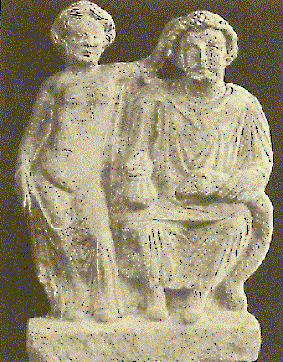
This statue is very, very important for several reasons. One: the goddess by Mercury's side is left unnamed, but if she is Rosmerta, then this statue might indicate not a mother-son relationship (as the Maia theory allowed to think) but a sexual one. Indeed, it would be one of the rare Rosmerta depictions with an accent on her body and a form of nudity - coupled with the suggestive gesture of touching Mercury's head. Two: Despite us knowing this was meant to be a Mercury, this Mercury is very unusual. He is not a youthful ephebe, but a mature, bearded man. No wings, no caduceus - only the pouch of coins typical of his charge... and a snake laying on his lap. Not just any snake: a ram-headed snake. If you read my previous post about the gods of Gaul you know what this means... This "Mercury" clearly sports the symbolism of Cernunnos. The bag of grains/food coins turned into a little purse, the antlers removed, but the beard and the ram-headed snake are still here, and the goddess still holds the god's head.
It had already been established that Mercury's popularity in Gaul was part due to replacing some aspects of Cernunnos - but if this goddess is Rosmerta (and indeed, some Cernunnos depictions did have a cornucopia-holding goddess near the god, usually identified as an unnamed mother-goddess), does this imply Rosmerta was initially a companion of Cernunnos?
As usual we are left with more questions than answers, and vague relationships we ultimately can never confirm...
#the gods of gaul#goddess of gaul#gallic goddess#gallic gods#gallic mythology#rosmerta#roman mythology#maia#mercury#cernunnos
41 notes
·
View notes
Text
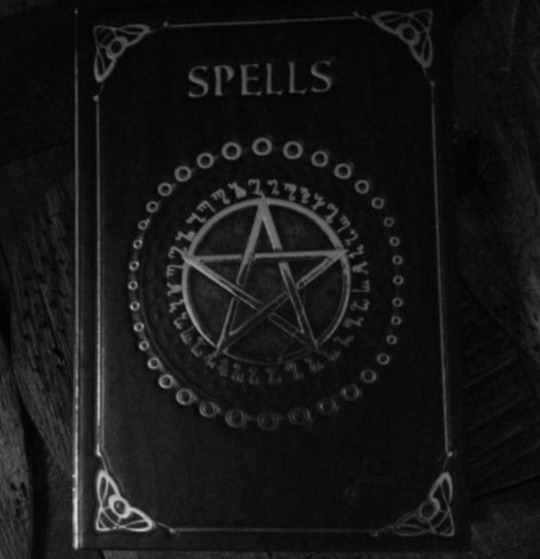
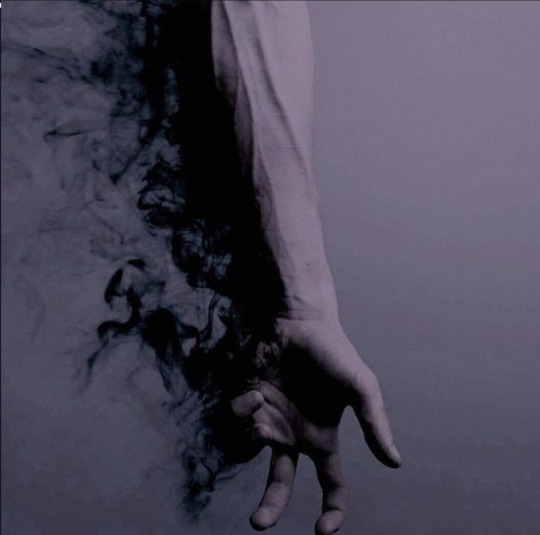
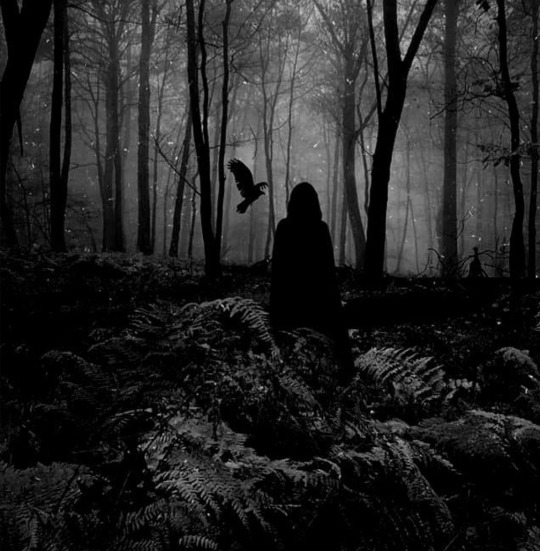
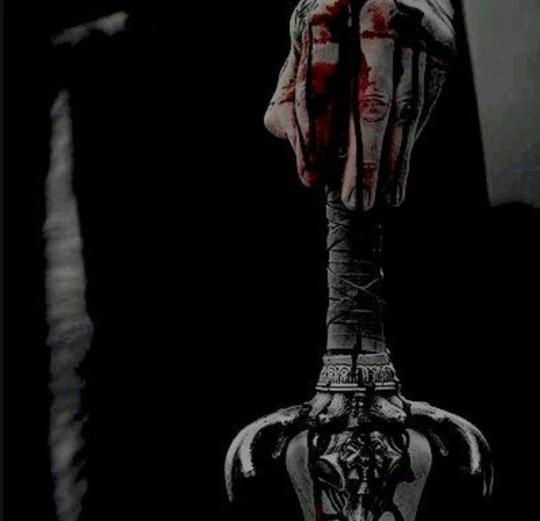

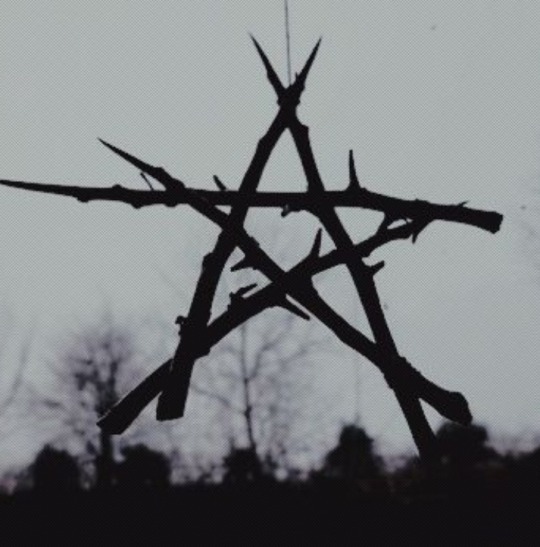

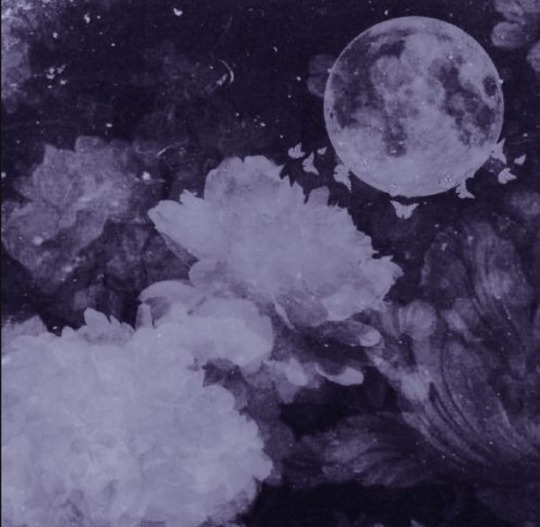
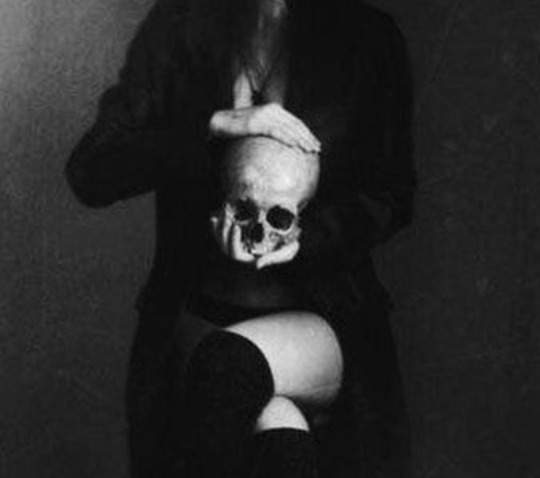
Adsaxsona (Weaver of Spells): Gaulish Goddesses of the Underworld, witches, magick, revenge, justice, and conflict.
#Adsaxsona#Adsagsona#gaulish goddesses#pagan#deities#polytheism#polytheist#deity#paganism#gaulish gods#gallic gods#gaulish paganism#gaulish deities#gaulish#Gaul#gallo roman#gallo roman paganism#celtic pagan#celtic paganism#celtic pantheon#celtic mythology#celtic#devotional moodboard#deity moodboard#moodboard#religio romana
13 notes
·
View notes
Text




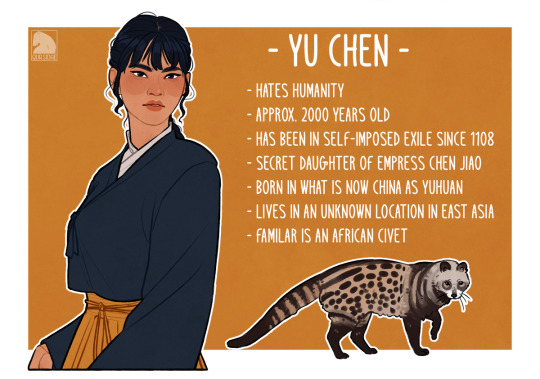
The 3 most powerful witches in modern times Feat. The 3 ways to become a witch !
See the read more for lore :p
[Carrd 🃏]
I've been thinking about power levels of this world for a while now, which made me question who the most powerful would be.
Aya has always been planned to be the most powerful, as she is the oldest alive witch and a witch's power level is deeply tied to her experience & knowledge.
Then I decided the 2nd most powerful one should be Aya's oldest apprentice that is still alive; Selma. Aya approached Selma mids the Gallic Wars due to rumors of a child druid who never aged. Part of the reason Selma is as powerful as she is, is her age, but it's also due to her being quite obsessed with power. This includes a desire to make a powerful wiccan bloodline. (Hence the 21 daughters)
3rd, is an old pupil of Aya's ex-lover (Now dead) who too grew deeply resentful of humanity. Now Yu is much the same way, but rather than die (As almost all witches do sooner than later) she choose to exile herself from humanity, other supernatural beings and fellow witches.
She may hate humans, but she isn't fond of other magical beings either, including witches. The reason she is as powerful as she is, other than age, is due to her time in exile being the perfect opportunity to strengthen and practice her skills and connection to the goddess.
Her backstory is based on the real tale of Chen Jiao.
As for; The 3 ways to become a witch
First of all; only women can be witches in this. Just so there is no confusion.
Originally I thought all witches should be chosen, but then I wanted there to be families of witches for the sake of the characters, so I added the inherited way. Then I remembered the old tale of trading your firstborn to witches/demons and thought it would work great with the lore.
The reason it was once the norm to be chosen is that there simply weren't enough witches to be able to pass it down. But as that increased, fewer witches were chosen. The only witch to be chosen in the last 100 years is Hella from the main cast of Midday Coven.
#midday coven#mc#aya jones#selma chevalier#yu chen#original characters#oc#ocs#I KNOW i just named another character selma#but it just works to well with her real name i couldn't help it yall#ALSO yall are not gonna believe it but i got the flu for like a month after i got rid of my pneumonia
19 notes
·
View notes
Note
What are other differences between hades and dis/pluto? Pluto is also said to have a twin sister named glauce, who died when she was young.
My research on Dis may not enough, here are some of differences that I can remember: (I'm taking Pluto, Dis Pater and Orcus as the same god for this moment)
Their characters in literature are different. Hades/Plouton is chill, sometime friendly. He showed welcome to those who came to the underworld. Dis is very emotional and always getting angry at others. (I suspect Hades wouldn't enjoy hanging out with Dis. Dis is spoiled by Jove who always condones his brother's reckless behavior. Even Poseidon wouldn't dare speak to Zeus like that In Iliad.😂)
According to Gallic War, the Gauls are descendants of Dis. Hades doesn't seem to have any mortal descendants, the only possible option is the Molossians.
Uvula is deified as Orci filia (child of Orcus). She could probably be taken as another daughter of Dis. There is not a goddess of uvula but a goddess of gout in the house of Hades.
Christian writer Tertullian claimed that in the arena, Jove's brother held a gavel and dragged out the bodies of gladiators. And Hades' hobbies are feasts and theater, like in Frogs.
On a curse tablet, Aurora is called Orchi soror (sister of Orcus), she seems to be a sister of Dis. And yes. According to Lactantius, Pluto had a long-dead sister, Glauca, but Lactantius dates the idea to the work of Euhemerus.
According to Servius, Dis is related to Soranus, the god of Mount Soracte north, who may origin from Etruscan god Suri. Thus he is also related to Apollo and wolfs.
Dis's mate in the Celtic region was Eracura, a goddess similar to Proserpina.
Pluto/Dis pater is one of the most important roman gods of North Africa.
The original of Secular Games relates to sacrifices of Dis Pater and Proserpine.
In short, they may have the same origin and similar features, but also have many differences because of different cultural contexts.
3 notes
·
View notes
Text
Baduhenna Deep Dive pt. 1
I have been called back to Baduhenna, and wanted to honour her by making a new, improved, longer informational piece about her. It is a beast, so it will be posted here in separate pieces. Let's begin
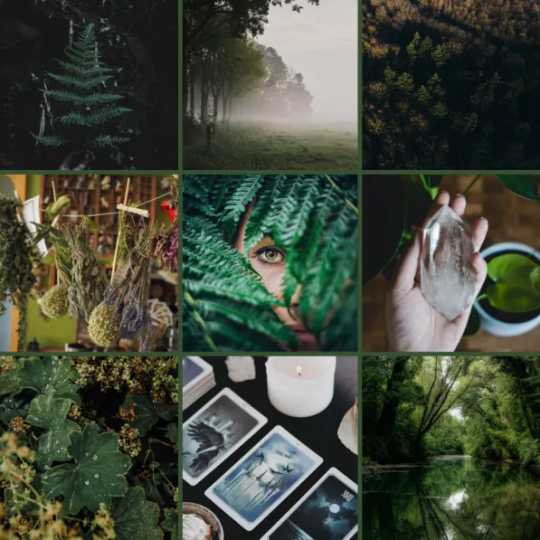
Epithets: (UPG)
Rootwoman
Goddess of the darkened woods
Lady of the marshland
Battle-crow
the Frisian Valkyrie
Wise Woman/White Woman (connection to Völvur and Witte Wieven)
Lady of Magic and Witchery
Faerie woman (again, connection to Witte Wieven and the Morrigan)
She of Roots and Ravens
Battle-Sister
Meaning name Baduhenna:
The first part of Baduhenna's name, Badu, probably comes from the Proto Germanic *badwa- which means "battle". Which might be connected to Badbh, one of the Morrígná, as well as Cathubodua, a Gallic Wargoddess. The second portion of the name -henna appears as-henae in the names of the matronae, Germanic Mothergoddesses often found in threes, which were widely revered in the Germanic area
Tacitus and the Annals
Tacitus is the only source we have on Baduhenna. In the Annals he describes a battle "in a wood called Baduhenna", where the Frisians fought their Roman oppressors and won. The area was being governed by Ollenius, a Roman who lived in Castellum Flavum. His predecessor had set a mild tax regime of ox-skins. However, Ollenius changed this regime so that the skins needed to be the size of an auroch, which the Frisians did not have.
Ollenius first had the cattle seized, then the farms, and eventually the daughters and wives of Frisian farmers were taken and sold into slavery.
In 28CE the Frisians had enough, and attacked Castellum Flavum. Ollenius called for aid from the fort of Noviomagus (now Nijmegen) to retaliate. The battle took place in what Tacitus calls "in a wood called Baduhenna", where the Frisians had the upper hand. They knew the area and fought with smaller weapons, earning them their victory. 900 Romans were killed in Baduhenna's Wood.
The deserters retreated to the home of one called Cruptorix, a former army man, where they turned on each other in paranoia and fear of betrayal. Perhaps because of a lot of the hirelings were Frisian who decided to seize their opportunity to overthrow their oppressors. Perhaps because of a battle-frenzy or -madness. But 400 more Romans perished. Ollenius was never heard from again, and the Frisians held their freedom from the Romans for almost 20 years.
Translation of Tacitus' Annals, from wikipedia:
Soon afterwards it was ascertained from deserters that nine hundred Romans had been cut to pieces in a wood called Baduhenna, after prolonging the fight to the next day, and that another body of four hundred, which had taken possession of the house of one Cruptorix, once a soldier in our pay, fearing betrayal, had perished by mutual slaughter.
74. The Frisian name thus became famous in Germany, and Tiberius kept our losses a secret, not wishing to entrust anyone with the war. [Deep Dive Masterpost]
#pagan#paganblr#frisian#norse#germanic#goddess#myth#mythology#baduhenna#forest#goddess of war#deep dive#Moodboard is mine#all pics from unsplash#heathen#heathenry#fern's practice
11 notes
·
View notes
Text
Arlecchino's Past & Her Being the Grim Reaper
Spoilers/leaks for 4.6 ahead
Made by Rosie Posie and Daniel :3
reposted from my twitter, leak-censored version on the genshin lore subreddit
The Fall of the Faded Castle
The Fall of the Faded Castle is where Arlecchino’s lore can be found. “The Mask of the Red Death” by Poe is the inspiration for this book. I’d recommend reading it, it’s very similar!
It’s referenced in Arlecchino’s kit (her infused normal attack), its name being “Mask of the Red Death”
The book has numerous references to the blood moon and debts owed, something also found in Arlecchino’s kit, as well as the use of the word “baleful”.
In her Character Introduction, she hallucinates her past in a way very similar to TFotFC. The lines are meant to parallel each other; the scene being the same but the setting is now different.
The final paragraph of her Character Introduction references the ending of TFotFC, and the moonlight that flows into the hearth through the window symbolizes her past.
TFotFC mentions the clock striking midnight and the castle master becoming panicked for the reaper that would come to collect his blood debt, and then Arlecchino’s introduction mentions her taking control over the room when the clock chimes.
Remuria
To move onto Arlecchino’s connections with Remuria, it requires extra context about Remus, the leader of Remuria.
Remus had his own sin, different from Egeria, where he altered life by dissolving his people into Golems. He meant for them to live for eternity, but the souls instead shattered.
While Egeria was punished by Celestia, Remus was punished by Arlecchino. The Fall of The Fated Castle is about Arlecchino punishing Remus. She’s responsible for Remuria falling. I know there are some really passionate Remuria fans, I hope I am not massacring the story haha. I’m more into the Ordo #sandronenation
Edit: it’s been brought to my attention that the guy in the story probably isn’t Remus, and I’m also on board with that. The guy who the Grim Reaper is hunting isn’t entirely relevant, but I suggest instead: Boethius
Unsorted Chapter
She’s still dead though; she’s glitching. She’s otherworldly. TFotFC describes the Grim Reaper as having two cold eyes that can pierce your soul with a glance. It questions if they are a lord returning from an ancient world, or the nightmare itself.
In the origins of her name, Arlecchino, in commedia del’arte, it’s said to trace back to Dante’s Inferno; a devil going by the name Alichino. Her character type is the “devil” stock character, but that character can also be molded into whatever, like being a lighthearted prankster.
She also has a scythe.. Grim Reaper much? She also marks enemies with her blood debt, something in her kit. The scythe effect that the polearm has is one that only Arlecchino can use. Her whole kit uses wording that can be attributed to TFotFC and the hearth.
The boss Arlecchino can be found at a grave. The writing says “Crucabena”, who is also “Ceridwen”. Crucabena is the Gallic equivalent. Ceridwen is the Welsh goddess of rebirth, which is a part of Arlecchino’s whole thing. Her grave’s subtitle could be referencing how the hearth is of two worlds.
Arlecchino’s constellation “Ignis Purgatorius” is based off of the poem “Purgatorius Ignis” by Christopher Okemwa. I don’t really know what’s going on in this poem, but I’d be more than happy to hear what others think.
Perinheri
Her character introduction shows us that she is in control of the hearth (in the Orphanage), and Perinheri shows more of her themes in the hearth; this could symbolize her being reborn as Arlecchino from being the Grim Reaper.
In book “Perinheri”, Perinheri is locked in a hearth and has to crawl through it. Then, he is asked if he has seen “it” yet, and if he is dead. When he turned around, he saw the Crimson Moon and a titanic horrified eye. After Perinheri was released from the hearth, he was told that he traversed through the fire of two worlds within the hearth and he is now reborn.
The Crimson Moon is Arlecchino, and the eyeball Perinheri saw is on her head in her boss fight.
TLDR
TLDR Arlecchino was the Grim Reaper and punished Remus for his crimes and then was reborn as Arlecchino but something is still wrong with her because she’s glitching. It could be because she’s caught between the two worlds within the hearth.
We also don’t have voice lines, character stories, or artifact lore leaks though so a lot of information is probably missing.
There are more connections to be made with Arlecchino, Caterpillar, the grave, Perinheri, and the experiments done on Caterpillar, but I don’t think I have enough to try and cover that.
#arlecchino genshin#arlecchino lore#genshin theory#harbingers#genshin lore#perinheri#remus#remuria#boethius
8 notes
·
View notes